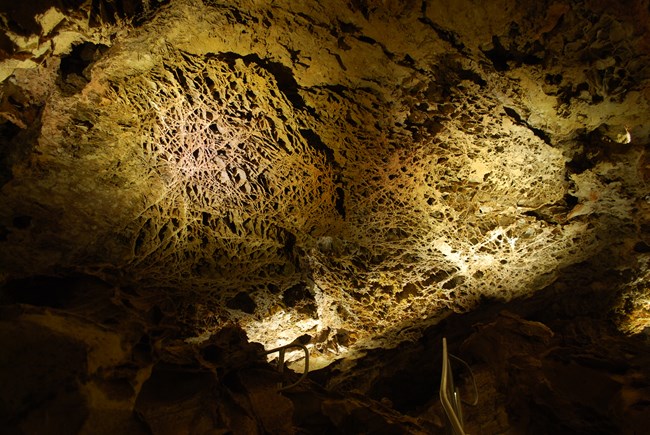
NPS photo/ Kim Acker
While many speleothems have formed as water has dripped into the passages, the most conspicuous feature of Wind Cave, boxwork, has probably formed differently. Boxwork is found in small amounts in other caves, but perhaps in no other cave in the world is boxwork so well-formed and abundant as in Wind Cave. Boxwork is made of thin blades of calcite that project from cave walls and ceilings, forming a honeycomb pattern. The fins intersect one another at various angles, forming "boxes" on all cave surfaces. Boxwork is largely confined to dolomite layers in the middle and lower levels of Wind Cave.

NPS photo The origin of boxwork remains one of the biggest mysteries of Wind Cave. According to Palmer and Palmer, many of the bedrock walls in Wind Cave have resistant fins of calcite from which the intervening limestone and dolomite bedrock has been removed by weathering. The veins in which the boxwork formed are along narrow fractures resulting from stresses produced when the mineral gypsum dried and rehydrated. The calcite formed in these fractures taking on the shape of the original gypsum crystals. The bedrock is less resistant than the boxwork veins. This occurs not just because the bedrock is less crystalline, but also because it has been changed to a crumbly sand consisting of calcite crystals held together by a sparse cement of secondary quartz. The quartz is the remnant of an early matrix that formed around former dolomite crystals. Much of the original bedrock was apparently removed by hydrogen sulfide/sulfuric acid (H2S-H2SO4) solutional processes, which left many very small pores. These porous zones easily weathered away during cave development, as well as later when they were in contact with the moist cave atmosphere. |
Last updated: June 30, 2020
